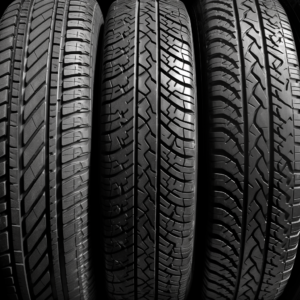Can you use different brand tires on your car?
Intro-
One question that often arises is- can you put two different brand tires on your car? The short answer is yes, you can put two different brands of tires on your car. But there are several factors you need to consider before making that decision.
When it comes to car maintenance, one of the most important things to consider is the tires. After all, they are the only part of the car that touches the road. As a result, it is essential to ensure that your tires are in good condition, well-maintained. Most importantly, it should be appropriate for your vehicle.
Why would you want to use different brands of tires on your car?
In some cases, it may be because you need to replace one or two tires, and the same brand and model are not available in your local area. Alternatively, you may want to mix tire brands to achieve better performance, such as grip, handling, or fuel efficiency.
Know the basics-
Tyres come in different sizes, tread patterns, and compounds, and not all of them will be suitable for your vehicle. Each car manufacturer specifies the tire size, type, and load capacity that their vehicles can use. You can usually find this information in your car owner’s manual, on the tire placard, or on the inside of the driver’s door. It is essential to ensure that any tire you use on your car meets these specifications.
What to consider before putting different brand tires on your car?
The factor to consider is the type of driving you will be doing. If you primarily drive on the highway, you may not notice much of a difference between two different brands of tires. Do you frequently drive on challenging terrain, such as steep hills, gravel roads, or icy conditions? You may want to consider using a set of matching tires for optimal performance.

Tread patterns can also play a role in the safety and performance of your car. Different tire brands have unique tread patterns, which affect the way they grip the road. For example, some tires have wider grooves or sipes. These are small cuts in the tread blocks, to improve traction on wet or slippery roads. Others have a more aggressive pattern for better off-road performance. Mixing different tread patterns can affect the handling, stability, and safety of your car, especially in wet or slippery conditions.
Another factor to consider when putting different brand tires on your car is the wear and tear. Tires wear out at different rates depending on their quality, composition, and usage. If you mix a brand-new tire with an old or worn one, it can affect the balance and stability of your car. This leads to uneven wear, vibration, or even blowouts. It is important to ensure that all tires on your car are in good condition. This includes sufficient tread depth and no signs of damage or punctures.
What is recommended?

It is generally recommended that you replace it with the same brand and model as the other three tires. Or you can choose a similar tire that matches the size, load capacity, and speed rating of the original. You can also choose a tire that complements the existing tires in terms of tread pattern and performance.
One option for putting two different brand tires on your car is to use different tires on the front and rear axles. This is a good compromise if you can’t find a matching set of tires or want to achieve better performance. For example, you may want to use a more grippy tire on the front axle for better steering and cornering. You can do this while using a more durable tire on the rear axle for better traction and braking. However, it’s essential to ensure that the tires on each axle are the same size, type, and speed rating. This is to maintain the balance and stability of your car.
It’s worth noting that some car manufacturers recommend against using different tire brands or models on the same vehicle. This is because they design their vehicles to work best with a specific type of tire. Mixing different tires can affect the performance, handling, and safety of the car. It’s always a good idea to check your owner’s manual. Or consult with a professional mechanic or tire specialist before making any changes to your tires.
Is it possible to put different brands of tires on your car?

There are several factors to consider before doing so-
Pros-
Availability:
In some cases, it may be challenging to find a matching set of tires in your local area, especially if you drive a less common or older vehicle. Using different brands of tires can give you more options and flexibility when it comes to replacing your tires.
Performance:
In certain situations, mixing different tire brands can improve the performance of your car. For example, you may want to use a more durable tire on the rear axle for better traction and braking, while using a more grippy tire on the front axle for better steering and cornering. This can be particularly useful if you have specific driving needs or preferences.
Cost:
Using two different brands of tires can also be cost-effective. Especially if you opt for a cheaper or more affordable brand for one or two tires. This can save you money on the initial purchase and potentially on future replacements. You may not need to replace all tires at the same time.
Cons:
Safety:
Mixing different tire brands can compromise the safety and stability of your car, particularly in wet or slippery conditions. Different tires have different tread patterns, compounds, and wear rates, which can affect the way they grip the road and interact with the other tires. This can lead to uneven wear, vibration, or handling issues, which can be dangerous and potentially cause accidents.
Warranty:
Using different tire brands on your car may void the warranty of the tires or the car itself. Especially if the car manufacturer recommends against it. This can leave you unprotected in case of defects, faults, or damages, and may incur additional costs in case of repairs or replacements.
Performance:
While mixing different tire brands can improve performance in some situations, it can also worsen it in others. For example, using a tire with a different speed rating or load capacity than the other tyres can affect the overall handling and stability of the car. This can be particularly problematic if you frequently drive on challenging terrain or at high speeds.
Aesthetics:
Using different brands of tires on your car can also affect its aesthetic appeal. Especially if the tires have different designs or logos. This may not be a significant concern for some drivers. But it can be a deal-breaker for others who want their car to look uniform and cohesive.

Final takeaway-
In conclusion, putting two different brands of tires on your car is possible. But it’s important to do so with caution and consideration. Your safety and the safety of other road users depend on the quality and suitability of your tires. So it’s always best to err on the side of caution and use a matching set of tires whenever possible.
If you do decide to mix tire brands, it’s essential to be vigilant. Monitor the performance of your car regularly. Check the tire pressure, tread depth, and condition of all tires. Look for signs of uneven wear, vibration, or handling issues. If you notice any abnormalities, it’s best to consult with a professional mechanic or tire specialist to diagnose the problem and recommend a solution.
